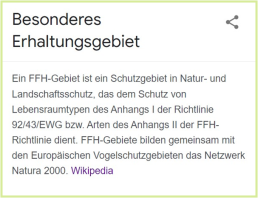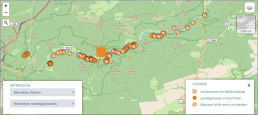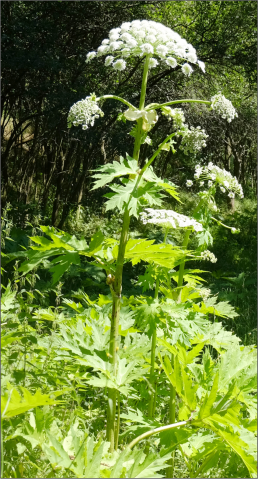UfU Information | Issue 4 – December 2021 | Department of Nature Conservation & Environmental Communication
Controlling invasive neophytes along an entire river?
The Selke becomes neophyte-free
Since the beginning of the work of the “Coordination Office for Invasive Neophytes in Protected Areas in Saxony-Anhalt” in 2010, UfU has been supporting the stakeholders in the Harz region who are working towards a neophyte-free Selke Valley. The Selke is a 65 km long river that flows north from the eastern Harz Mountains and flows into the Bode. The entire Selke valley in the Harz, which is one of the most impressive and diverse valleys in the Harz, is protected as the FFH area “Selke valley and mountain meadows near Stiege”.
In the early 2000s, the Lower Nature Conservation Authority of the Harz district decided that more measures were needed to combat the spread of invasive neophytes along the Selke. She called on people to take part in the “Neophyte-free Selke Valley” project. After searching in vain for nature conservation funding for the necessary measures, she found two employment companies that were prepared to carry out such measures with the long-term unemployed.

Giant hogweed
One of these employment companies, Ökologische Sanierungs- und Entwicklungsgesellschaft Aschersleben (ÖSEG), has been continuously implementing measures in the Selke valley between Selkemühle and Meisdorf since around 2005. The first step was to remove the large areas of giant hogweed already present there. Great progress was quickly visible in the first few years, and after a few years ÖSEG was proud to report that no more giant hogweed was blooming. However, as the seeds of the giant hogweed can survive in the soil for up to seven years, individual young giant hogweed plants were repeatedly discovered and removed until 2020. The occurrences of giant hogweed (and other invasive neophytes) were recorded in the KORINA database and published in the atlas on korina.info. It is also possible to document that an occurrence was no longer found. This allows the measures implemented to be documented.
Occurrence of the giant hogweed in the Selke valley near the Selkemühle, screenshot KORINA Atlas from 25.10.2021

The Japanese knotweed
Japanese knotweed has only become increasingly widespread along the Selke in the last ten years. As it forms underground rhizomes, even a very small piece of which can form a new plant, its control is much more difficult and must continue intensively in the coming years. There is also a risk of plant parts being carried away during floods.
Neophyte management project on the Selke
In 2020, UfU was commissioned to implement the project “Neophyte management – development of sustainable control measures against invasive neophytes on the Selke and its tributaries in Saxony-Anhalt”. This project is intended to bring together the many years of work by the lower nature conservation authorities, the employment agencies and the State Agency for Flood Protection and Water Management. ÖSEG’s work in the Selke valley near Selkemühle has shown that control is also possible in flowing waters. However, such measures are only sustainable if they are coordinated across the entire watercourse.
In the project, the occurrences of invasive neophytes were recorded and those occurrences whose control is a priority from the point of view of nature conservation and water management were identified. The aim is to completely remove the giant hogweed from the Selke catchment area and to minimize the impact of the Japanese knotweed.
Heracleum mantegazzianum = giant hogweed ; Photo Katrin Schneider



